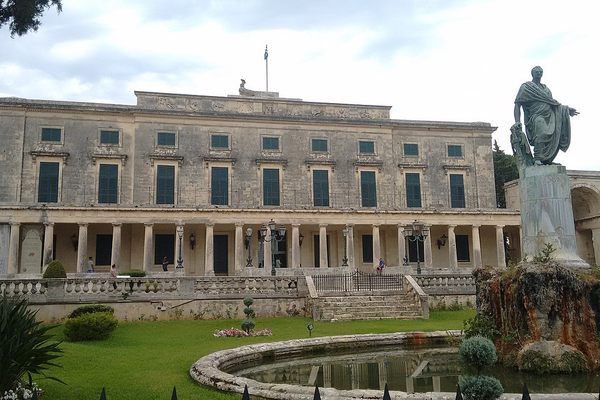About
While his family name may call to mind the jewelry house founded by his father, the younger Louis Comfort Tiffany (1848–1933) earned a reputation of his own as a prolific artist and designer. Though he’s best known for his stained glass, Tiffany was also a painter, potter, metalworker, ceramicist, and later a jewelry maker. The most complete collection of his work—as well as a sweeping selection of work by accomplished contemporaries—can today be found at an understated museum north of Orlando in Winter Park.
In breathless detail, the Morse Museum outlines Tiffany’s self-described "quest of beauty." Taking influence from the natural world, Tiffany impressed vibrant colors, botanical motifs, and flowing lines—today regarded as hallmarks of Art Nouveau—into his vast body of work. While the museum features permanent exhibits on iridescent glasswork, American taste during the Victorian Era, and the Arts and Crafts movement, Tiffany’s work is undoubtedly the centerpiece. The heart of this collection is a piece that, at once, showcases the range and mastery of Tiffany’s craftsmanship and artistry— the Tiffany Chapel.
Built as a showpiece for the World’s Fair in 1893, Tiffany’s Byzantine-Romanesque chapel is said to have stunned many of its visitors to silence upon entering the space. Now reconstructed to its original composition at the Morse Museum, the chapel consists of 16 carved plaster arches, six soaring columns encrusted with glass mosaics, a 10-foot-wide electrified chandelier, a marble altar, a domed baptismal font, and several stained-glass windows. This cherished piece of Tiffany’s legacy, which he dedicated in part to his father, is one that established him internationally as a leading designer of his time.
The museum is also home to a 6,000-square-foot exhibit of objects salvaged from Tiffany’s Laurelton Hall Estate on Long Island, New York. He decorated the 84-room home with hand-selected furniture, lighting fixtures, windows, desk sets, and pottery. These included unique objects collected during his world travels and pieces designed by Tiffany that never made it to market. His “Four Seasons” window—a series of stained-glass window panels depicting each season—hung in his living room after winning a gold medal at the 1900 Exposition Universelle in Paris. Laurelton Hall was abandoned and later ravaged by fire in 1957, but these and other objects were salvaged from the estate and donated to the Morse Museum thanks to Jeanette McKean, who founded the museum and dedicated it to her grandfather, Charles Hosmer Morse.
Related Tags
Know Before You Go
Tickets ($6) can be booked through the Morse Museum website. Parking is available directly behind the museum; additional free parking is available at Park Place garage on Canton Avenue across from the museum. Closed Mondays and most major holidays.
Community Contributors
Added By
Published
April 24, 2024
Sources
- https://www.tiffany.com/world-of-tiffany/about-louis-comfort-tiffany/
- https://morsemuseum.org/louis-comfort-tiffany/laurelton-hall/
- https://www.visitorlando.com/listing/the-charles-hosmer-morse-museum-of-american-art/31377/
- https://www.lonelyplanet.com/usa/florida/winter-park/attractions/charles-hosmer-morse-museum-of-american-art/a/poi-sig/1184293/1320664
- https://www.lonelyplanet.com/usa/florida/winter-park/attractions/charles-hosmer-morse-museum-of-american-art/a/poi-sig/1184293/1320664














































